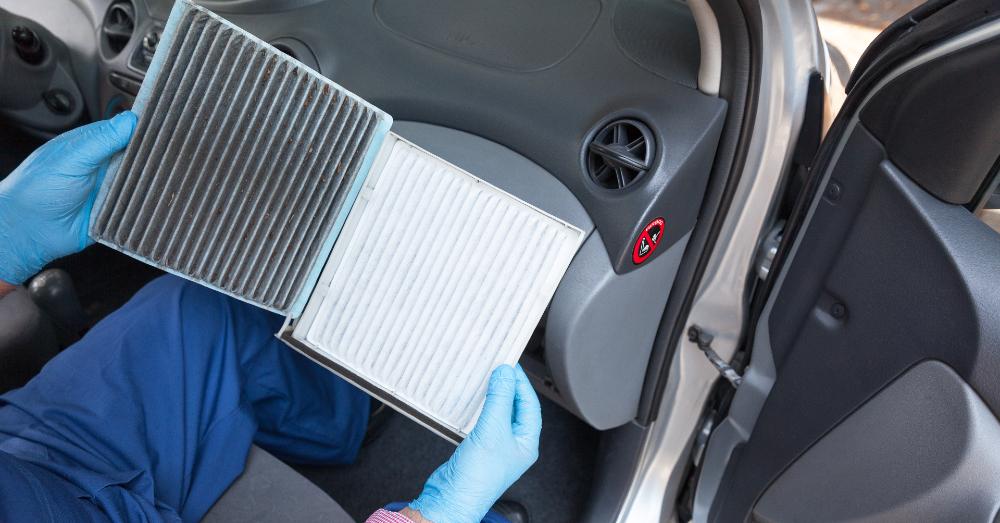Vehicle recalls are one of the biggest headaches we face as drivers. The last thing we want is to get a notice of a recall in the mail.
We depend on our cars, trucks, and SUVs to take us everywhere we need to go every day. Part of this means ensuring these vehicles remain safe to drive. Unfortunately, if you drive a mass-produced vehicle, which would be almost all of us, you’re going to face at least one recall during your life.
What is a Vehicle Recall?
Most recalls occur due to safety issues. Some are simply preventive items deemed necessary by the NHTSA, but others violate the Federal Motor Vehicle Safety Standard and require immediate repairs. When a defect in a vehicle poses an unnecessary risk to the safety of the driver, passengers, and other motorists, a safety recall is issued.
Since the 1960s, when the safety recall system began, automakers have issued safety recalls for more than half a billion vehicles and their equipment. Some recalls don’t involve safety issues, but most do. Today, with the advanced electronics we have in vehicles, recalls could easily be for items that would never cause an unsafe driving experience. These recalls could instead be for items that create an unpleasant overall experience.
How Does a Problem Become a Recall?
Many vehicle recalls start as simple consumer complaints filed with the NHTSA. If the complaints warrant investigation, this organization will initiate that investigation to understand what’s causing the complaint. Automakers can issue voluntary recalls If a recall is necessary and handle the problem that way. Of course, when an automaker does not issue a voluntary recall, the NHTSA can issue one by using a court order.
Recalled Were Huge in the 1960s
The automotive world felt like a huge can of worms opened on them when the safety standards were first initiated. The National Traffic and MotorVehicle Safety Act of 1966 established this early form of safety checks, and within four years, more than ten million cars had recalls issued on them.
This was a new era in the auto industry, now focused on making vehicles safer and more reliable for drivers. These early vehicle recalls showed what the average would be. Between 10 and 20 million vehicles receive recalls each year since the 1960s. The exception was 2014 and 2015 when the Takata airbags and GM ignition switches created a massive increase in the numbers.
Frequently Asked Questions About Recalls
Can I Check to See if my Car has any Recalls?
Using the government’s online recall search tool, you can enter your VIN and determine if your vehicle has any open or unfixed recalls. This is a good way to know if a vehicle you plan to purchase is the subject of an incomplete recall. If you find an incomplete recall in the search, the next step is to contact your local dealer and find out how to complete the recall.
In addition to learning recall information using the VIN tool, you can also learn if any scheduled services remain incomplete.
How Can I Initiate a Recall for My Car?
You must first file a safety complaint with the NHTSAto initiate any recall. This can only happen if the issue in question relates to the vehicle’s safety. If you have a separate issue that doesn’t relate to the vehicle’s safety, you need to address it with the manufacturer. Most non-safety-related issues won’t become one of the vehicle recalls but could be easily fixed at your local dealership.
Is There a Set Number of Defects Required for the NHTSA to Open an Investigation?
There is not a set number of defects and complaints required for the NHTSA to investigate a potential issue. This agency compares the number of complaints about a vehicle or equipment against the total number manufactured. The agency also considers petitions filed requesting an investigation before an investigation begins.
How Does a Manufacture Track Down Owners When a Recall is Issued?
Using purchase agreement records and vehicle registration information, automakers can quickly track down owners of the vehicles in question. They typically send letters explaining the recall and how to have it fixed. Depending on the severity of the recall, some automakers will replace the vehicle minus a deprecation allowance. Still, most recalls require a short visit to the local dealership service center to have the problem addressed.
What Should I Do if I Receive One of the Vehicle Recalls?
As soon as you receive the letter telling you that you have a recall for your vehicle, you need to read it. It’s important to understand what the problem is and what you need to do. Some recalls are severe enough that you need to stop driving your car right away, while others will require a quick fix at the service center. Make an appointment with your dealer location and start working on the recall.
Is There a Deadline for Completing Recall Repairs?
Safety recalls do not have an expiration date, except in the case of tires. If the recall is for the original tires on your car, and you still have those tires, you only have 180 days to have the recall completed. Other recalls do not expire and stay active until completed for your vehicle.
Are Recall Repairs Always Free?
Most of the time, automakers will perform recall work free of charge, regardless of the age of the vehicle. They are not required to do this for vehicles 15 years and older. Tires that are five years old or older only have a requirement of five years. After these times have passed, dealer service centers can charge for recall work.
Now that you know more about vehicle recalls, it’s time to enter your VIN into the online tool to learn if your vehicle has any outstanding recall issues or maintenance needs. Doing this can only help ensure your vehicle remains safe and reliable when you drive.
This post may contain affiliate links. Meaning a commission is given should you decide to make a purchase through these links, at no cost to you. All products shown are researched and tested to give an accurate review for you.




